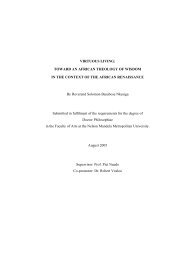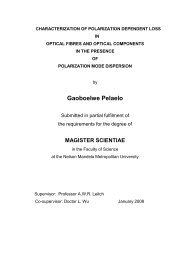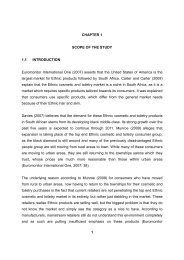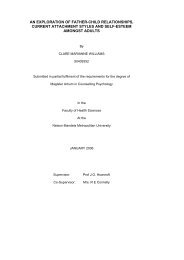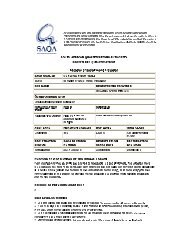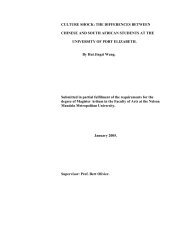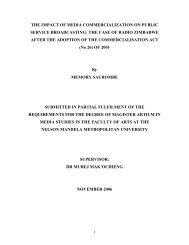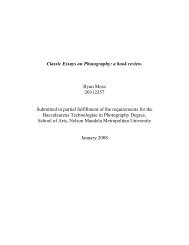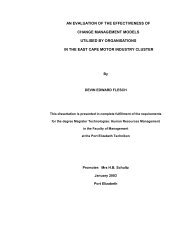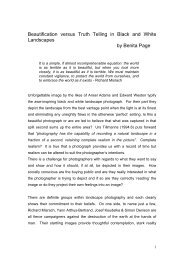an investigation into the antibacterial activities of medicinal plants ...
an investigation into the antibacterial activities of medicinal plants ...
an investigation into the antibacterial activities of medicinal plants ...
You also want an ePaper? Increase the reach of your titles
YUMPU automatically turns print PDFs into web optimized ePapers that Google loves.
5.1.6 Pl<strong>an</strong>t extract dilutions that displayed <strong>an</strong>tibacterial activity<br />
The undiluted pl<strong>an</strong>t extracts <strong>of</strong> Bulbine frutescens, Leonotis leonurus, Meli<strong>an</strong>thus<br />
major & Z<strong>an</strong>tedeschia aethiopica were serially diluted in <strong>the</strong> microtitre plate assay to<br />
obtain <strong>the</strong> MIC’s <strong>of</strong> <strong>the</strong> different pl<strong>an</strong>t extracts. Table 9a displays <strong>the</strong> dilutions where<br />
<strong>the</strong> MIC values were obtained for <strong>the</strong> specific pl<strong>an</strong>t extracts.<br />
Twenty-one bacterial strains represented by two Gram-positive bacteria<br />
(Staphylococcus aureus & methicillin-resist<strong>an</strong>t Staphylococcus aureus) <strong>an</strong>d three<br />
Gram-negative bacteria (Pseudomonas aeruginosa, Acinetobacter baum<strong>an</strong>ii &<br />
Klebsiella pneumoniae) were used for assessing <strong>the</strong> <strong>an</strong>tibacterial activity <strong>of</strong> pl<strong>an</strong>t<br />
extracts in <strong>the</strong> microtitre plate assay.<br />
The undiluted extract concentrations were different for each <strong>medicinal</strong> pl<strong>an</strong>t extract<br />
following resuspension <strong>of</strong> <strong>the</strong> extract residues with solvent. The extracts <strong>of</strong> M. major<br />
displayed <strong>the</strong> highest undiluted concentrations in comparison to <strong>the</strong> extracts <strong>of</strong> <strong>the</strong><br />
o<strong>the</strong>r pl<strong>an</strong>ts (Table 5). Therefore <strong>the</strong> dilutions in Table 9a represent different<br />
concentrations <strong>of</strong> <strong>the</strong> pl<strong>an</strong>t extracts where <strong>the</strong> MIC values (Table 9b) were obtained.<br />
Table 9a indicates to what extent <strong>the</strong> pl<strong>an</strong>t extracts were diluted to display <strong>an</strong><br />
inhibition <strong>of</strong> <strong>the</strong> bacteria in <strong>the</strong> microtitre plate assay. The dilutions in Table 9a<br />
correlate with <strong>the</strong> MIC values (mg/ml) in Table 9b. The specific pl<strong>an</strong>t extract dilutions<br />
in Table 9a serve as a point <strong>of</strong> reference for <strong>the</strong> visible observation <strong>of</strong> MIC’s <strong>of</strong> pl<strong>an</strong>t<br />
extracts.<br />
69



